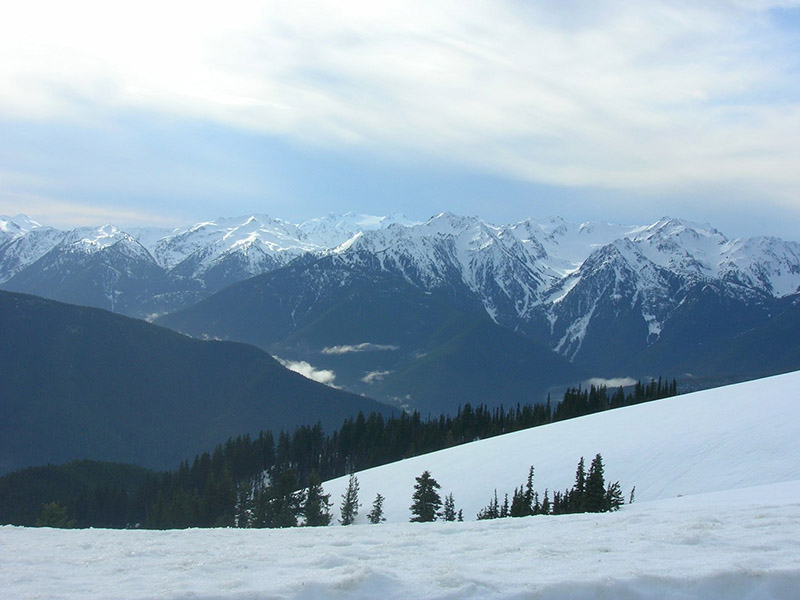
Despite the snow covering Hurricane Ridge, the Olympic Mountains are still at only half of their normal snowpack with spring right around the corner. National Park Service webcam photo
With all the clouds in the air over the last month, you’d think at least one would have a silver lining. But to those who thought recent weather events might alleviate the state’s ongoing drought, there’s “snow such luck.”
Weather events during the first weekend in March bumped statewide snowpack by 10 percent, raising our snow water equivalent (the amount of our water supply stored as snow) from 61 percent to 71 percent of normal.
“The snow was helpful for the magnitude of drought impacts, but there is still significant concern for multiple regions of the state,” said Ecology’s statewide drought lead Caroline Mellor. “The Olympics did go from 34 percent last week to 51 percent today (March 2), which is a huge jump for a week. That doesn't make 51 percent any less concerning.”
Mellor said the state would still need significantly above normal precipitation and cold temperatures to address the existing snowpack deficit and snowpack drought concerns. However, statewide, predictions for the next three months are for higher-than-average temperatures and lower -than-average precipitation. In addition to the existing drought declaration, areas of specific concern include the Olympic region, the central Cascade foothills and the upper Columbia Basin.
A snowpack drought is one in which we receive normal amounts of precipitation, but it falls as rain when it’s historically been snow. Washington relies heavily on snowpack melting into streams and aquifers through spring and summer months for water supply. According to climate models, by 2050, we can expect a snowpack drought more than 40 percent of years.
The state’s current drought, declared in July last year for 12 watersheds in 12 counties, is still in effect and scheduled to expire at the end of June. The statewide drought advisory is still in effect.
Water supply at a glance:
Source: National Integrated Drought Information System
- Snowpack – 71 percent
- Precipitation for the water year so far – 92 percent of normal
- Current Streamflows – Ranging from below normal to normal statewide with impacts from the snow drought anticipated in spring and summer.
- Streamflow Forecast – Areas in the northwest, central and eastern regions of the state are expected to rank among the lowest years on record.
What’s next?
Ecology continues to monitor the situation and depending on evolving conditions, has the option to extend the duration of the drought declaration or expand the number of affected areas. Each month Ecology chairs a meeting of the Water Supply Availability Committee. This meeting includes updates from various state and federal agencies regarding the many factors that contribute to our water supply. A recording ot the February meeting is available below.
The state of Washington defines drought as the combination of less than 75 percent of normal water supply and the potential for undue hardship. While the WSAC meets monthly to discuss the water supply component of drought, we rely on other input to help determine hardship.
You can help us understand your concerns about drought by filling out this survey. This information will help Ecology and other state agencies to better understand the current and future impacts of drought in different regions of the state. No identifying information will be collected in this survey.
Online resources
Keep up with current water supply information by visiting our statewide conditions page and our water supply monitoring page.
The National Integrated Drought Information System recently launched new state-specific drought pages. The folks at NDIS worked with our staff to include some language describing how Washington defines drought.


